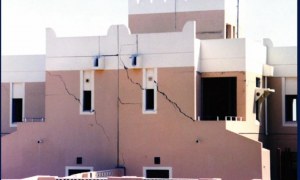🕑 Reading time: 1 minute
Wet, moist and damp subgrade are classified based on its water content.
Varying water content affects the performance of subgrades hugely, therefore, it becomes important to study the behaviour of subgrade under different conditions. In this regard, wet, moist, and damp subgrade can be recognized based on the water quantity in the subgrade material.
Subgrade is considered to be the most significant component of the pavement structure. This is because of its function where it acts as a foundation for other pavement components that are constructed upon it and have to withstand detrimental influences of weather and traffic loads.

Added to that, the Engineer-in-charge should know the differences between wet, moist, and damp condition and how they affect the stability of the pavement structure.
The most obvious features of subgrade which are affected by moisture content are bearing capacity, shrinkage, and swelling. The following table provides differences between wet, moist, and damp subgrade.

Difference between wet, moist, and damp subgrades
| Wet subgrade | Moist subgrade | Damp subgrade |
| According to ACI 116R-90, wet condition occurs when the material is covered with visible free moisture | According to ACI 116R-90, moist condition happens when the material is moderately covered with moisture | According to ACI 116R-90, damp condition occurs when the material is slightly dump but not quit dry to the touch |
| It is the sign of highest level of moisture | It is moderate moisture between wet and dump | Indicates lowest level of moisture |
| Wet subgrade defects severely under loads. | Bearing capacity performance is better than wet subgrade but inferior to damp subgrade | Damp subgrade provide the best performance in terms of load bearing capacity in comparison with wet and moist subgrade. |
| Wet subgrade undergoes significant swelling and shrinkage. As a result, pavement deforms and cracks | Swelling and shrinkage of moist subgrade and defects of pavement above is somewhat between damp and wet subgrade | It does not suffer from swelling and shrinkage considerably, and hence the pavement does not suffer greatly. |
| Wet subgrade is not suitable for pavement construction, so it needs to be improved using suitable enhancement technique | It might be used for pavement construction but a slight improvement may be needed. | It is suitable for pavement construction |
| If roads are constructed on such subgrade without proper improvement, then future maintenance would be needed. | Less costly improvement can be used to avoid future maintenance | It does not require improvement and future maintenance is not costly. |


